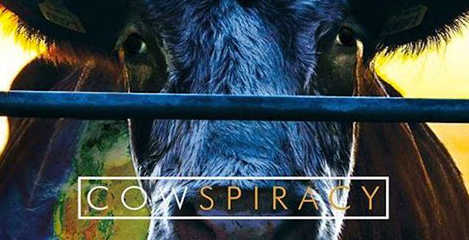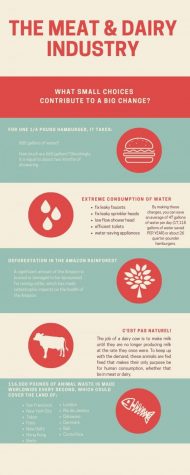
Cowspiracy
Being named “the film that environmental organizations don’t want you to see,” the 2014 documentary Cowspiracy discusses the impact that the meat and dairy industry has on our health and our planet.
One of the filmmakers, Kip Andersen, watched Al Gore’s film An Inconvenient Truth as a child, and it changed his outlook on the world completely. He implemented small changes in his life by becoming an OCE (obsessive-compulsive environmentalist).
Andersen participated in taking shorter showers, biking everywhere instead of driving, turning the lights off in rooms no one was in, changed all of his light bulbs to energy-efficient ones, composted, turned off the water while brushing teeth. It wasn’t until he researched about the meat and dairy industry that he realized he wasn’t nearly making a dent, and there’s more change that needs to happen. With most of the United States population being carnivores, a vast amount of land is a requirement to support these lifestyles.
The average Californian uses 1500 gallons of water per person per day, half of which is related to dairy and meat products. Human overpopulation is a problem that is contributing to environmental havoc. With more people comes more food, hence leading to more production of animal products to meet commands.
Environmental organizations such as 350.org, Greenpeace, Sierra Club, Climate Reality, and Rainforest Action Network mentioned nothing within animal agriculture has a significant impact on climate change on their websites. These primary organizations’ main focus is decreasing natural gas, oil production, and fracking. Fracking is the injection of fluid into shale beds at high pressure to free up petroleum resources. Livestock in the United States uses a minimum of 34 trillion gallons of water each year, while hydraulic fracturing 100 billion gallons of water annually. To compare the effect of livestock versus hydraulic fracturing, the methane emissions from each activity are nearly equal.

It is possible to save 1100 gallons of water, 45 pounds of grain, one animal’s life, 10 pounds of carbon dioxide, and 30 square feet of forest land per day by going vegan. The idea of backyard farming raises the question as to if this is a more sustainable option since there would be more portion control, less food wasted, and less meat wasted.
Making sure that water is used in a mindful manner is something that these charities and campaign support, but when discussing why these websites did not mention animal agriculture on the Save Our Water campaign website, an awkward tension formed. “One is water management, and the other one is behavior change,” said Kamyar Guivetchi from the California Department of Water Resources. Domestic water consumption is only 5% of water consumption in the US, while 55% of water consumption in the United States is for animal agriculture. With doubts that Americans would switch to a plant-based lifestyle, it doesn’t seem like they want to get involved with encouraging a plant-based diet.
Livestock plays a significant role in global warming, so animal agriculture is the leading cause of resource consumption and environmental degradation, destroying the planet today. Animal agriculture produces 65% of the world’s nitrous oxide emissions, a gas with a global warming potential 296 times greater than carbon dioxide per pound.
At the rate we are continuing at, predictions state that to have no fish in our oceans by 2048.
To learn more about the impact animal products have on our planet, explore the Cowspiracy site here.